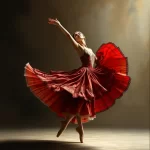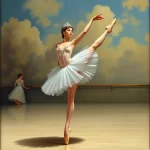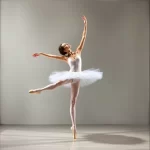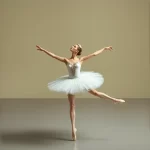Spanish Ballet: The Fusion of Flamenco and Classical Ballet

Introduction
Ballet, a classical dance form known for its grace, precision, and ethereal quality, has a rich history that spans several cultures and countries. One of the most fascinating fusions in the world of ballet is the integration of Flamenco and Classical Ballet in Spain. This unique blend not only highlights Spain’s rich cultural heritage but also contributes significantly to the global ballet scene. The Spanish ballet, with its distinctive style and techniques, offers a compelling narrative of cultural synthesis and artistic innovation.
Historical Context
Spain has a long and storied history of dance, deeply rooted in its diverse cultural influences, including Moorish, Gypsy, and Andalusian traditions. When ballet was introduced to Spain, it was during a period of cultural renaissance and political change. The 18th and 19th centuries saw Spain opening up to various European influences, including the classical arts. This period was crucial for the development of a unique Spanish ballet style that would later incorporate elements of Flamenco, a dance form that is quintessentially Spanish.
Origins of Ballet in Spain
Early Influences
The early influences on Spanish ballet were a mix of local dances and European classical ballet. Traditional Spanish dances like the Jota, Fandango, and Bolero played a significant role in shaping the initial stages of ballet in Spain. These dances, characterized by their rhythmic footwork and expressive movements, provided a rich tapestry of techniques that could be integrated into classical ballet.
Key Figures
One of the pioneering figures in the establishment of ballet in Spain was Vicente Escudero, a dancer and choreographer who was instrumental in blending Flamenco with classical ballet techniques. Another key figure was Mariemma, a renowned Spanish dancer and choreographer who founded the Mariemma Ballet School, which became a cornerstone for training in this unique style.
Development and Evolution
Formative Years
During its formative years, Spanish ballet saw the establishment of several important institutions and the staging of significant performances. The Royal Conservatory of Dance in Madrid, founded in the early 20th century, played a pivotal role in formalizing ballet education in Spain. The integration of Flamenco elements into classical ballet began to take shape during this period, with choreographers experimenting with new styles and movements.
Cultural Integration
Ballet in Spain was well-received by society, becoming an integral part of cultural and political life. The Spanish Civil War and subsequent Franco regime saw a suppression of many cultural expressions, but ballet managed to survive and even thrive, often serving as a form of subtle resistance and cultural preservation. The fusion of Flamenco and ballet became a symbol of national identity and resilience.
Signature Style and Techniques
Unique Characteristics
Spanish ballet is distinguished by its incorporation of Flamenco’s passionate and rhythmic footwork, intricate hand movements, and expressive storytelling. Unlike traditional classical ballet, which often emphasizes lightness and ethereal quality, Spanish ballet brings a grounded, earthy intensity to the stage. The use of castanets, fans, and traditional Spanish costumes further sets it apart.
Influences on Global Ballet
Spanish ballet has had a profound influence on the global ballet scene. Choreographers like Antonio Gades and Cristina Hoyos have created works that are celebrated internationally. Signature pieces such as “Carmen” and “Blood Wedding” have become staples in ballet repertoires worldwide, showcasing the unique blend of Flamenco and classical ballet.
Notable Ballet Companies and Schools
Major Ballet Institutions
Several major ballet companies and schools in Spain have played a significant role in the development and promotion of Spanish ballet. The National Ballet of Spain, founded in 1978, is one of the most prominent institutions, known for its innovative productions and international tours. The Mariemma Ballet School and the Royal Conservatory of Dance in Madrid are also key institutions that have trained generations of dancers in this unique style.
International Recognition
Spanish ballet companies and schools have garnered numerous awards and international recognition. The National Ballet of Spain has received accolades for its performances at prestigious venues like the Paris Opera and the Bolshoi Theatre. Individual dancers and choreographers from Spain have also been honored with awards such as the Prix Benois de la Danse and the National Dance Award.
Iconic Ballet Performances and Choreographies
Signature Ballets
Some of the most famous ballets that originated from Spain include “Carmen,” choreographed by Antonio Gades, and “Blood Wedding,” based on the play by Federico García Lorca. These ballets are known for their dramatic storytelling, intricate choreography, and the seamless integration of Flamenco elements. “Carmen,” in particular, has become an iconic piece, celebrated for its passionate portrayal of the titular character and its innovative use of Flamenco techniques.
Influential Choreographers
Influential choreographers like Antonio Gades, Cristina Hoyos, and Nacho Duato have made significant contributions to Spanish ballet. Gades is renowned for his work in integrating Flamenco with classical ballet, while Hoyos has been celebrated for her powerful performances and innovative choreography. Nacho Duato, a contemporary choreographer, has brought a modern sensibility to Spanish ballet, blending traditional elements with contemporary dance techniques.
Contemporary Ballet in Spain
Modern Developments
In the contemporary era, Spanish ballet continues to evolve, with new trends and prominent figures emerging. Choreographers like Victor Ullate and María Pagés are pushing the boundaries of traditional ballet, incorporating elements of modern dance and other cultural influences. New institutions, such as the Ballet Flamenco de Andalucía, are also contributing to the vibrant ballet scene in Spain.
Current Challenges and Opportunities
The ballet community in Spain faces several challenges, including funding cuts, competition from other forms of entertainment, and the need to attract younger audiences. However, there are also numerous opportunities for growth and innovation. The increasing popularity of dance festivals and international collaborations offers new platforms for Spanish ballet to reach wider audiences. Additionally, the rise of digital media provides new avenues for promoting and preserving this unique art form.
Cultural Impact and Legacy
Cultural Significance
Ballet in Spain has had a profound cultural impact, shaping and being shaped by the country’s rich artistic traditions. The fusion of Flamenco and classical ballet serves as a powerful symbol of Spain’s cultural diversity and creativity. It has also played a role in preserving traditional Spanish dances and bringing them to a global audience.
Global Influence
The ballet tradition from Spain has influenced other countries and the global ballet scene in numerous ways. The unique blend of Flamenco and classical ballet has inspired choreographers and dancers worldwide, leading to new styles and innovations. Spanish ballet companies and choreographers continue to be celebrated on the international stage, contributing to the rich tapestry of global ballet.
FAQ
What is the history of ballet in Spain?
Ballet in Spain has its roots in traditional Spanish dances and European classical ballet. It evolved during the 18th and 19th centuries, with significant contributions from key figures like Vicente Escudero and Mariemma. The fusion of Flamenco and classical ballet became a defining feature of Spanish ballet.
Who are the most influential figures in Spanish ballet?
Key figures in Spanish ballet include Vicente Escudero, Mariemma, Antonio Gades, Cristina Hoyos, and Nacho Duato. These dancers and choreographers have made significant contributions to the development and promotion of Spanish ballet.
What makes Spanish ballet unique?
Spanish ballet is unique for its integration of Flamenco elements, including rhythmic footwork, expressive hand movements, and dramatic storytelling. The use of traditional Spanish costumes and props like castanets and fans further sets it apart from other forms of ballet.
How has Spain influenced global ballet?
Spain has influenced global ballet through its unique fusion of Flamenco and classical ballet. Choreographers and dancers from Spain have created iconic works that are celebrated internationally. Spanish ballet companies and schools have also trained generations of dancers who have gone on to perform and teach worldwide.
Are there any famous ballets from Spain?
Notable ballets from Spain include “Carmen,” choreographed by Antonio Gades, and “Blood Wedding,” based on the play by Federico García Lorca. These ballets are known for their dramatic storytelling and innovative choreography, incorporating elements of Flamenco.
How can I learn more about ballet in Spain?
To learn more about ballet in Spain, consider reading books like “Flamenco: Gypsy Dance and Music from Andalusia” by Claus Schreiner and “The Spirit of Flamenco: From Spain to New Mexico” by Nicolasa Chávez. Documentaries such as “Flamenco, Flamenco” directed by Carlos Saura also provide valuable insights into the world of Spanish dance.
Conclusion
Summary
Spanish ballet, with its unique fusion of Flamenco and classical ballet, offers a rich and compelling narrative of cultural synthesis and artistic innovation. From its early influences and key figures to its development and contemporary trends, Spanish ballet has made significant contributions to the global ballet scene.
Reflection
The lasting impact of Spain’s ballet tradition on the global ballet community is a testament to the country’s rich cultural heritage and creative spirit. As Spanish ballet continues to evolve, it will undoubtedly inspire new generations of dancers and choreographers, contributing to the vibrant and diverse world of ballet.





